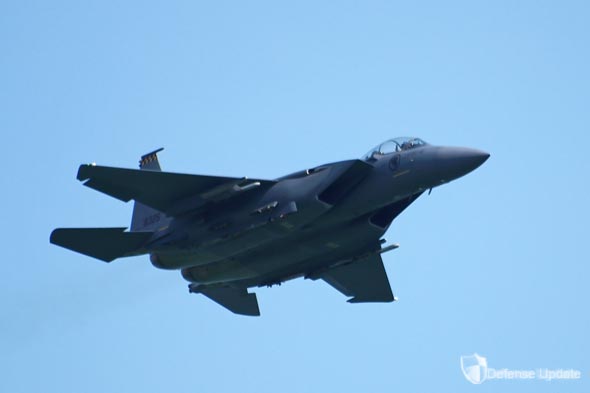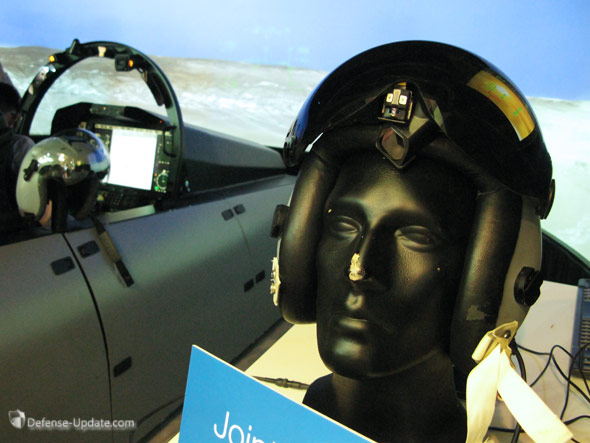Recent orders for F-15 fighters from Saudi Arabia are securing the future for the Boeing F-15 production line at least until the year 2018. Beside the Saudi mega deal, South Korea has an ongoing tender for the third phase of the FX, while the US Air Force is looking into possible upgrades to keep its F-15C/Es at least through the decade. The USAF is expected to begin evaluating life extensions for the Eagle soon. Such programs could address avionics, radar and survivability enhancements.


According to Roger Besancenez, Vice President F-15 program at the Boeing Defense company, more prospects for new orders and modernization of existing fighters would keep the line busy beyond 2018. Besancenez presented the Eagle roadmap to the media at the Singapore Airshow 2012 yesterday. He said such prospects are not limited to the FX-3 program in South Korea. Boeing currently support the first two phases of the Korean Slam Eagle (F-15K) program. The last batch of aircraft delivered last month in St. Louis were flown by South Korean crews directly to Nellis, to take part in the Red Flag exercise in Nevada.
The most prominent feature of the F-15 offering in Korea is the Silent Eagle program, converting the F-15 into a balanced stealth platform, retaining the high performance and combat versatility of the F-15 with signature reduction techniques. This stealth capability will be introduced through a range of optional elements, including a conformal weapons bay, canted vertical tails, radar and the use of thermal absorbing materials, Singapore is also expecting to receive its next batch of F-15SG toward the end of this year, completing the delivery of 24 aircraft, currently representing the most advanced configuration and the first international Eagle to fly an AESA radar. To maximize the benefits of the new sensors and stealth capabilities the advanced Eagle is offered with an optional, advanced cockpit utilizing large area 11×19 inch color displays, enabling the two crew member to understand a situational picture, plan, manage and execute game plans and communicate with other airborne, ground based or naval elements.
The advanced cockpit is expected to be ready for production by 2015. This new cockpit is likely to include the JHMCS II helmet mounted cueing sight system. Boeing is already discussing the roadmap for the follow-on JHMCS with the subcontractor Vision Systems Inc., (VSI). This next generation system will employ much of the technology developed at Elbit Systems for the new Targo all-digital EO tracked helmet sight system. Accordingly, the next version of JHMCS IIT reflects this association, as the new system will employ all the Targo capabilities, including color displays, built-in simulation, embedded INS and more. JHMCS IIH will also employ Targo technology but to a lesser degree. Introduced as an upgrade for existing electromagnetically tracked JHMCS systems, supporting current tracking techniques, interfaces, etc.

Saudi Arabia has committed to buy 84 new build fighters, to be produced at St. Louis, MI, while modernizing existing F-15S Eagles to the same standard of the SA in Saudi Arabia. In addition to the low-risk integration of the Raytheon APG -63 V3 AESA radar, derived from the F-15SG, the F-15SA will also feature the digital fly-by-wire flight control system for the first time, and include the all digital electronic countermeasures (DEWS). The aircraft will also support the two outboard weapon stations (1 and 9), which have been provisioned but not been activated so far by other Eagle operators. The added stations will enable the aircraft to carry more weapons loads in more versatile configurations. Another new feature of the F-15SA will be the new wing, which require no programmed Depot Maintenance (PDM), as current aerostructures do.
As the Singaporean and Saudi orders are breathing new life into the Eagle program,encouraging the development of new enhancements. Beyond the AESA radar which is currently operational, production versions of DEWS and digital fly-by-wire are scheduled to begin flight testing by the end of 2012.
Elements of the Silent Eagle are expected to be flown and ready for insertion into production or retrofitted aircraft by 2015, including the RCS signature reduction techniques, canted vertical tails and conformal weapon bay. The aircraft was developed with the Korean FX-2 competition in mind. Therefore, Boeing often highlights the fact that Seoul will share a large part of the aircraft production, with Korean Aerospace slated to produce the conformal weapons bays, and the entire SE maintaining 85% commonality with the current F-15K, claiming a significant advantage in life cycle cost and maintaining high readiness levels of the entire Slam Eagle fleet.


















